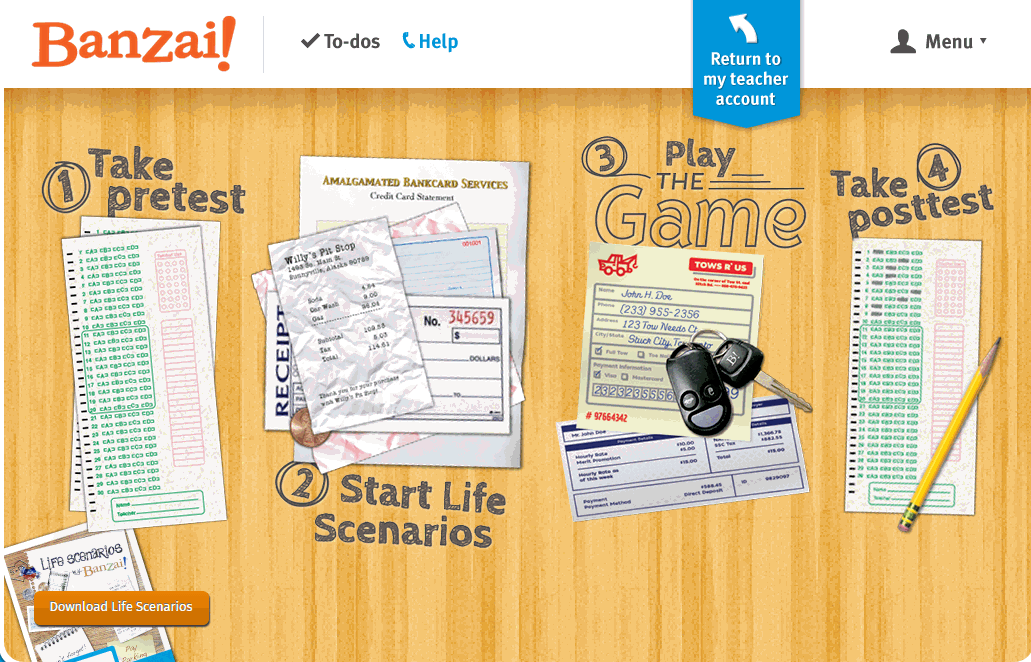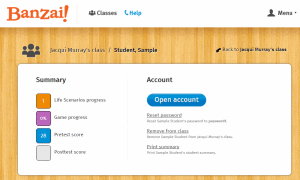 When kids read that America’s $18 trillion+ debt is accepted by many experts as ‘business as usual’, I wonder how that news will affect their own personal finance decisions. Do they understand the consequences of unbalanced budgets? The quandary of infinite wants vs. finite dollars? Or do they think money grows on some fiscal tree that always blooms? The good news is: Half of the nation’s schools require a financial literacy course. The bad new is: Only half require a financial literacy course.
When kids read that America’s $18 trillion+ debt is accepted by many experts as ‘business as usual’, I wonder how that news will affect their own personal finance decisions. Do they understand the consequences of unbalanced budgets? The quandary of infinite wants vs. finite dollars? Or do they think money grows on some fiscal tree that always blooms? The good news is: Half of the nation’s schools require a financial literacy course. The bad new is: Only half require a financial literacy course.
Banzai is a personal finance curriculum that teaches high school and middle school students how to prioritize spending decisions through real-life scenarios and choose-your-own adventure (kind of) role playing. Students start the course with a pre-test to determine a baseline for their financial literacy. They then engage in 32 life-based interactive scenarios covering everything from balancing a budget to adjusting for unexpected bills like car trouble or health problems. Once they’ve completed these exercises, they are dropped into a scenario where they have just graduated from high school, have a job, and must save $2,000 to start college. They are constantly tempted to mis-spend their income and then face the consequences of those actions, basing their decisions on what they learned in the 32 scenarios. Along the way, students learn to handle rent, gas, groceries, taxes, car payments, and life’s ever-present emergencies. When they finish, they take a post-test to measure improvement in their financial literacy.
Teachers register as many classes as necessary. Their dashboard lists all students in each class and a summary of which activities they have finished. Student work is graded by the website and updated on the teacher dashboard.
Students receive a class code to join. They log into their desktop and see four tasks they need to accomplish:
- financial literacy pre-test
- 32 life scenarios requiring decisions about spending
- a game based on concepts they learned, which they can take as often as they’d like
- a post-test
Students track their progress on a personal account page:
Pros
This is a free program, thanks to the generosity of local sponsors. It is aligned with state standards and is used in all 50 states by more than 17,000 teachers. It covers most of the major hurdles students face when they must stretch a paycheck over life’s expenses. 
The game progress is based on student choice. Their spending decisions determine where they to next. Students quickly see the connection between financial decisions and funding important personal goals–like college.
Cons
I’m looking… still looking… Hmm…
Education applications
The gamified environment works well for Middle School and High School courses in Economics, Family Life education, financial literacy, and personal finance. Because of this ‘choose your own adventure’ approach, it’s also well-suited to after-school programs and summer camps that are looking for a day-long immersive experience in financial literacy. As students progress through the program, talk with students about the topics raised. Get their perspectives. Do they believe they need homeowner insurance? How many have credit cards–that they pay for themselves? Is college an important goal?
Banzai is free to all interested schools through partnerships with local area credit unions and banks (like United Southeast Federal Credit Union in Tennessee). For more detail, watch this 17-minute video on how to use it in your classroom:
I’d love feedback from anyone who’s used Banzai. What do you think? Did your students love it as much as I did?
More on economics in education:
6 Sites + 12 + 6 About Coin Counting
24 Economics Websites for Middle School
Jacqui Murray has been teaching K-18 technology for 30 years. She is the editor/author of over a hundred tech ed resources including a K-12 technology curriculum, K-8 keyboard curriculum, K-8 Digital Citizenship curriculum. She is an adjunct professor in tech ed, Master Teacher, webmaster for four blogs, an Amazon Vine Voice, CSTA presentation reviewer, freelance journalist on tech ed topics, contributor to NEA Today, and author of the tech thrillers, To Hunt a Sub and Twenty-four Days. You can find her resources at Structured Learning.






































I used Banzai with 8th grade students in a class called Planning for the Future, which is, sadly, no longer offered. After introducing the program I allowed them to work with a partner at their own pace. This was, by the way, prior to the “Game” being added. Comments were positive and students were engaged. Were I to use Banzai again, I would ask students to compile a list of new vocabulary words (with definitions they researched) encountered along the way, since many of the terms were new to them. The pre-test and post-test were helpful to me and appreciated by the students. The range of pre-test scores was surprising, with some students scoring almost perfect scores. I’m sure the addition of the Game will help make this a more complete experience, but my students learned from it and enjoyed the way it allowed them to make “grown-up” financial decisions.
Thanks for the feedback. It’s good to hear from someone who’s gone through the program.
Hi Jacqui! Thanks for the review!! We really appreciate working with teachers to figure out the best way we (Banzai) can suit them. I wanted to invite you to re-review our program. We have update quite a lot and would love your input! Let me know, and I can make sure we get things squared away for you.